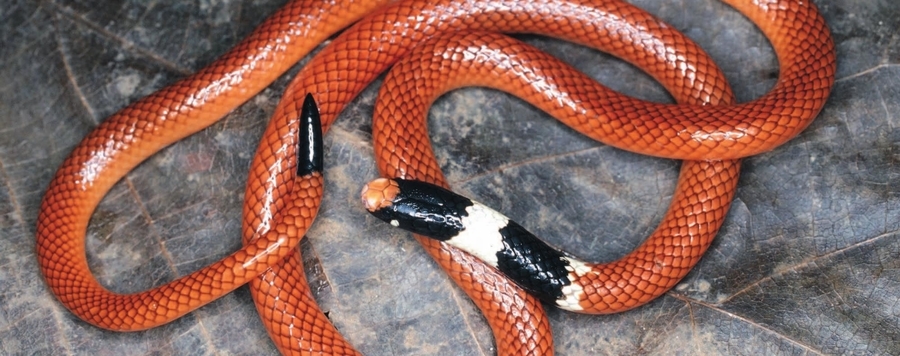
Revisiting the taxonomic status of Apostolepis sanctaeritae, a forgotten Neotropical dipsadid snake
Apostolepis Cope, 1862 is a highly diversified and speciose Neotropical dipsadid genus, encompassing almost 40 species of fossorial or cryptozoic snakes, widely distributed east of the Andes. In this work, we revisit the taxonomic status of A. sanctaeritae Werner, 1924, a rather controversial taxon described from a single specimen. Apostolepis sanctaeritae has been subject to several synonymizations and revalidations, being currently relegated as a junior synonym of Apostolepis cearensis Gomes, 1915. A careful reanalysis of its coloration pattern, pholidosis, and a detailed description of the skull morphology of A. sanctaeritae, based on CT-scan data of the holotype, provide compelling evidence for its revalidation. Furthermore, we consider A. ammodites Ferrarezzi, Barbo & Albuquerque, 2005 as a junior synonym of A. sanctaeritae, considering a total overlap of important diagnostic characters of coloration (large snout blotch reaching up to the frontals, wide black nuchal collar), pholidosis (rostral scale does not reach one/half of its interprefrontal suture), osteology (curved dentary, with 8–9 teeth loci; prearticular crest slightly higher than surangular crest), and geographic distribution (recorded from the Cerrado of Brazil). We also present a detailed osteological description and taxonomic account for A. sanctaeritae plus brief comments on the taxonomy of Apostolepis, suggesting major changes for the current framework seen in recent publications.






